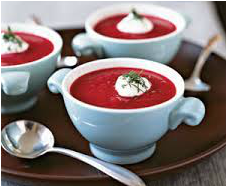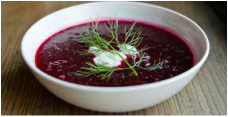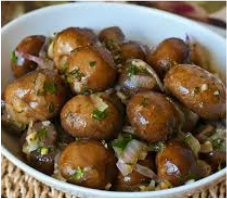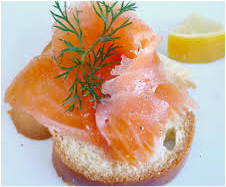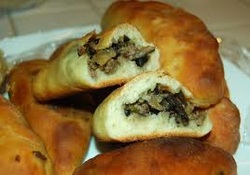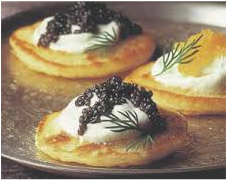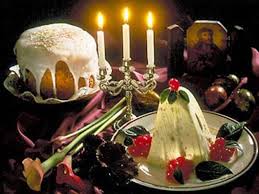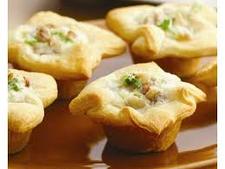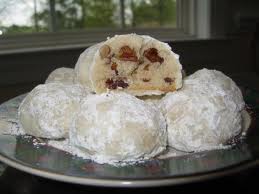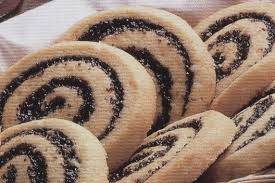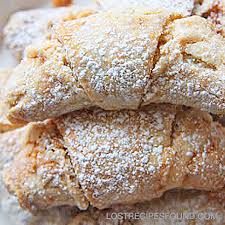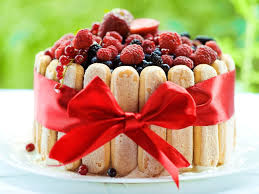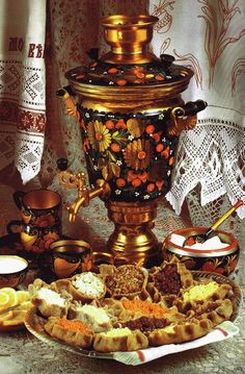
Kathleen has been fascinated by Russian culture since she first saw both the intricately decorated dyed hard boiled Easter eggs and the decadent gold Faberge eggs fashioned for the Tsars. She was stunned by the contrast: a work of art made from nothing more than a little paint and a hen’s egg versus a gleaming egg-shaped mini-sculpture covered with the costliest gems and pearls. Yet both were exquisitely beautiful. In the same spirit, in this little book on Afternoon Tea, we also hope to celebrate the simplest and most humble foods alongside stunning and complex gourmet creations.
In addition to their penchant for startling contrasts, the Russians have a reputation for warm hospitality, and in a Russian home, tea and vodka are ever at the ready for guests. The traditional center if the tea table is the Samovar, a big boiler to keep water hot for tea at a moment’s notice. A small teapot is kept warm on the top of the Samovar, filled with tea concentrate. When a guest wants tea, the host pours a small amount of the tea concentrate into a teacup; then he fills the cup with hot water from the ornate tap of the Samovar.
In times past, Samovars were large, coal-fueled stoves, but now they come in electric models about the size of coffee urns. Kathleen confesses that in doing the research for this menu, she fell in love with the Samovar and purchased a nickel-plated version on the website etsy. It was shipped from Estonia in under a month, and everyone who sees it is fascinated by it. It is quite at home among Kathleen’s other silver tea accoutrements.
In our Russian-inspired tea menu, we feature a blend of zaruski (appetizers meant to accompany vodka,) traditional Easter holiday foods, and Russian dishes too delicious to omit. Russian Caravan Tea is still available and tends to be an aged, smoky tea, reminiscent of the long, overland journey that tea made in the ancient days by camel and horseback from China to Russia
In addition to their penchant for startling contrasts, the Russians have a reputation for warm hospitality, and in a Russian home, tea and vodka are ever at the ready for guests. The traditional center if the tea table is the Samovar, a big boiler to keep water hot for tea at a moment’s notice. A small teapot is kept warm on the top of the Samovar, filled with tea concentrate. When a guest wants tea, the host pours a small amount of the tea concentrate into a teacup; then he fills the cup with hot water from the ornate tap of the Samovar.
In times past, Samovars were large, coal-fueled stoves, but now they come in electric models about the size of coffee urns. Kathleen confesses that in doing the research for this menu, she fell in love with the Samovar and purchased a nickel-plated version on the website etsy. It was shipped from Estonia in under a month, and everyone who sees it is fascinated by it. It is quite at home among Kathleen’s other silver tea accoutrements.
In our Russian-inspired tea menu, we feature a blend of zaruski (appetizers meant to accompany vodka,) traditional Easter holiday foods, and Russian dishes too delicious to omit. Russian Caravan Tea is still available and tends to be an aged, smoky tea, reminiscent of the long, overland journey that tea made in the ancient days by camel and horseback from China to Russia
Menu
Beverages:
Russian Caravan Tea
Decaf English Breakfast Tea
Flavored Vodkas
Savories:
Borscht Shots
Charlotte’s Marinated Mushrooms
Open-faced Smoked Salmon Sandwiches on Swirled Rye
Piroshki
Caviar Platter with Blini with Sour Cream
Kulich with Paskha Cheese Spread
Sweets:
Cheese Tarts
Russian Tea Cakes
Poppy Seed Cookies
Walnut Crescents
Charlotte Rousse (On the Pedestal)
Beverages:
Russian Caravan Tea
Decaf English Breakfast Tea
Flavored Vodkas
Savories:
Borscht Shots
Charlotte’s Marinated Mushrooms
Open-faced Smoked Salmon Sandwiches on Swirled Rye
Piroshki
Caviar Platter with Blini with Sour Cream
Kulich with Paskha Cheese Spread
Sweets:
Cheese Tarts
Russian Tea Cakes
Poppy Seed Cookies
Walnut Crescents
Charlotte Rousse (On the Pedestal)
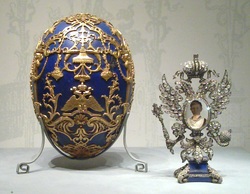
As a note to those of you who keep Kosher, this entire menu can be transformed into a Kosher Russian Tea simply by substituting vegetable broth for the beef broth in the Borscht recipe below. And make sure the gelatin for the Charlotte Russe does not include animal products. This note is for Kosher cooks who know how to handle and wash dishes, pots and utensils according to the laws of Kashrut.
|
Recipes Included:
Borscht Chances are, if you think “Russian Food,” you think borscht. Beets are among the small number of vegetables that survive in the harsh climate that makes up much of Russia. Luckily, borscht is beautiful, economical, freezes well, and most importantly, is delicious. A tiny serving of the thick, velvety, scarlet-hued soup is an elegant addition to your tea table. In the summer, offer it chilled, in clear shot glasses, nestled in a bed of ice. In fall or winter, present the borscht hot, in petit demitasse cups. Either way, top each serving with a dollop of sour cream. The snowy white against the deep red of beet soup is richly appetizing. Charlotte’s Marinated Mushrooms We first tasted these marinated mushrooms as part of an antipasto platter at a wedding. The guests at our table were so taken with the depth of flavor that we were all coyly angling for the last one, politely, of course. The remedy for Marinated Mushroom deprivation is to make them yourself so your guests may help themselves to as many as they want. The recipe doubles beautifully, and these mushrooms can be made several days in advance, making them an ideal party food. Open-faced Smoked Salmon Sandwiches Smoked Salmon is a Russian specialty, and the distinctive taste of this northern cold water fish needs no further enhancement than good butter, good bread and a tiny sprig of dill to make the perfect Smoked Salmon Sandwich. Scatter a few pieces of watercress around the serving platter for guests who might want to add a little crunch to these open-faced sandwiches. Piroshki Piroshki are filled little hand pie-type dumplings, something like a pot sticker, made of yeast dough. Savory fillings of cabbage, beef, potato, and cheese all may be found in piroshki but we like mushroom best. One cannot read any Russian literature without bumping into the characters feasting on piroshki! Caviar Platter with Blini Blini are small, savory buckwheat pancakes, which make charming supports for a host of toppings, starring a Russian staple, caviar. Purchase a grade of caviar according to your budget, and do shop around for the best selection and price. At Asian markets, the bright orange flying fish roe, tobiko, is usually available for a modest price. We’ve seen imported caviar in large super markets and at Beverages and More. American fisheries have begun to farm caviar, so do seek it out. Spoil your guests with a little bite reminiscent of the Tzarina’s tea table. Kulich with Paskha Cheese Spread Easter, rather that Christmas, is the main holiday of the Russian year. And no foods are more closely associated with Easter than Kulich, a sweet, raisin-studded yeast bread baked in a can and Paskha, a sweet, molded cheese to be served with the Kulich. This duo welcomes guests at the traditional Russian Easter table and is perfect to serve at a spring brunch or tea party. They are both easy and delicious but do take advanced planning. Cheese Tarts These sweet cheese tartlets are a variation of savory piroshki called Vartrushki. Originally made with yeast dough, we’ve made them here with a rich egg yolk and sour cream dough while keeping the traditional cheese filling. An X is cut in the top of the filled tartlets so the creamy filling can peek through. We think these tartlets will earn a place not only in our Russian tea menu but also in many of your teatime menus. Russian Tea Cakes As we mentioned in our October Dia de Los Muertos menu, Russian Tea Cakes and Mexican Wedding Cookies are one and the same delightful little nut and butter cookie. For those of you who did not get the memo, here they are in their disguise as Russian Tea Cakes. This decades-old recipe adapted from Betty Crocker differs only slightly from our Mexican Wedding Cookies recipe. Both will make some of the best cookies you have ever eaten. Poppy Seed Cookies Poppy seeds are very popular in Russian cooking and baking, turning up on buttered noodles, in yeast breads and rolls, and in all manner of cakes and cookies. Our dense poppy seed filling is rolled up pinwheel-style, making a perfect cut-and-bake refrigerator cookie recipe. The busy hostess may even skip making the filling from scratch and purchase a good brand of canned poppy seed filling, such as Solo brand. If making your own filling, always buy poppy seeds from a reliable source, as they do not store well at room temperature. Once home, store the poppy seeds in the freezer until ready to use. Walnut Crescents Delectable nut cookies are found all over Eastern Europe, and our recipe combines the best of several versions. Spiral-shaped like rugelach, our un-cinnamoned crescents are packed with the unadulterated taste of toasted walnuts, accented by apricot jam. The cream cheese dough is tender and crisp, making these rolled up gems almost addictive. These are one of our very favorite cookies to serve along with a hot cup of tea: irresistible! Charlotte Rousse A Charlotte is one of our favorite desserts: a chilled creamy construction of Bavarian cream set in a mold lined with ladyfingers. The Charlotte Russe was invented by the French chef, Marie-Antoine Carême, who named it in honor of his former employer, George IV’s only child, Princess Charlotte, and his concurrent, Russian employer, Czar Alexander I (russe being the French word for “Russian.”) |

